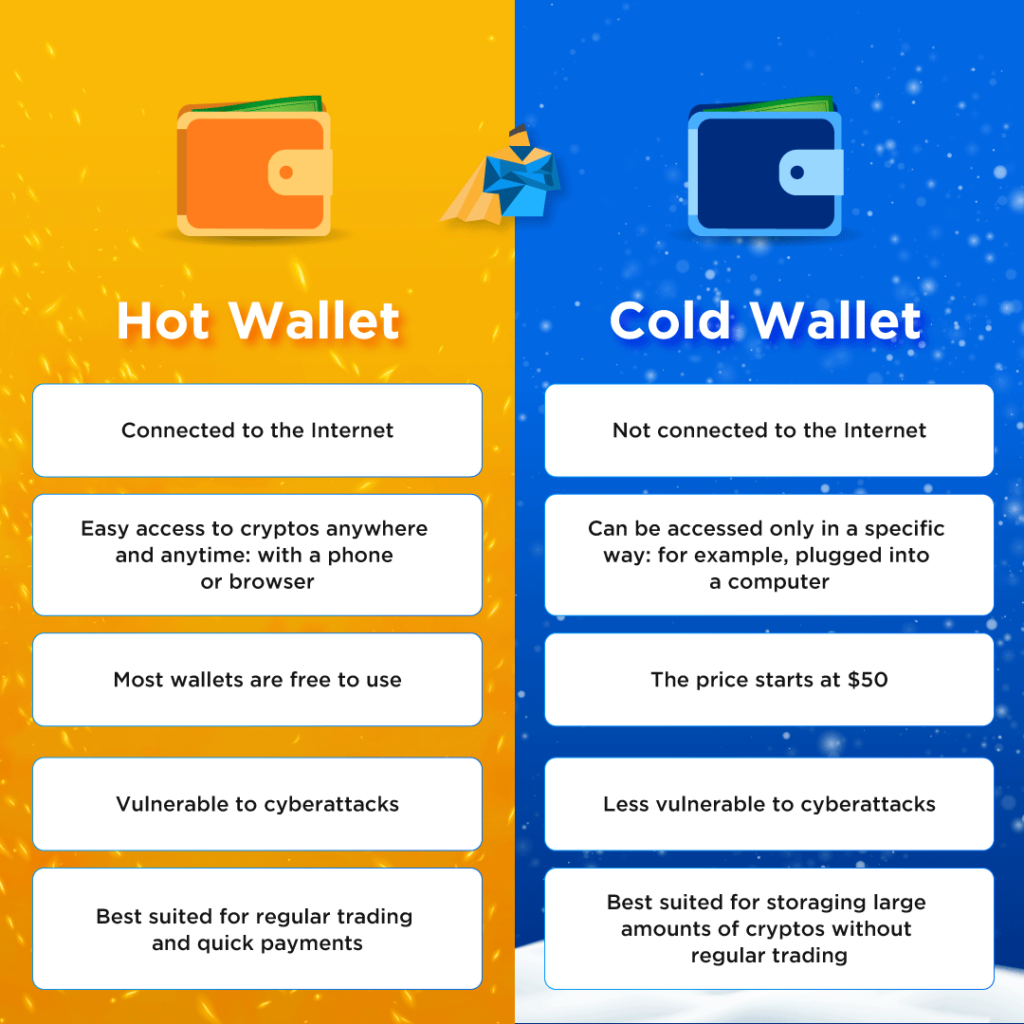Storing Cryptocurrency: A Comprehensive Guide for 2024
Storing cryptocurrency isn’t as straightforward as simply depositing dollars into a bank account. With digital currencies, users must carefully select their storage method based on several factors, such as the level of security needed, how frequently they plan to transact, and the level of control they want over their crypto holdings. Whether you’re an active trader or a long-term investor, finding the best way to store your crypto—most importantly, the safest—is crucial.
What Is the Safest Way to Store Cryptocurrency?
Though the choice of storage depends on your specific preferences and needs, the safest way to store crypto is generally considered to be using a hardware wallet, like Ledger or Trezor. These hardware wallets typically cost around $100, but they offer the highest level of security—provided you don’t lose the physical device that stores your private keys.
Different Methods for Storing Cryptocurrency
There are several ways to store cryptocurrencies, ranging from cold wallets to hot wallets. Each type has its pros and cons, depending on your requirements. Here’s a deeper look into the most commonly used types of crypto storage.
Cold Wallets (Cold Storage)
Cold wallets refer to offline storage options for cryptocurrency. They are typically used by individuals who prioritize security over convenience. Cold wallets are ideal for storing large sums of cryptocurrency that aren’t needed for regular transactions. Since these wallets are kept offline, they are far less vulnerable to hacking attempts or unauthorized access.
How Cold Wallets Work Cold wallets store private keys offline, often in the form of hardware devices or paper. Since they’re not connected to the internet, they eliminate the risks associated with online threats. Users who store funds in cold wallets retain full control over their private keys, giving them sole responsibility for safeguarding their assets. Cold storage is often viewed as the most secure option for long-term holdings.
Examples of Cold Wallets
Popular hardware wallets like Ledger and Trezor use USB drives to store private keys offline. These wallets come with additional security features such as a PIN code and a backup seed phrase, offering a solid layer of protection for your assets.
How to Use Cold Wallets
To use a cold wallet, plug the hardware device into your computer, enter your PIN, and launch the required software to send or receive transactions.
Pros and Cons of Cold Wallets
- Pros:
- Highest level of security due to offline storage
- Ideal for long-term storage or large amounts of cryptocurrency
- Complete control over private keys
- Cons:
- Not suitable for frequent transactions due to offline nature
- Initial setup may be challenging for beginners
- Costly hardware devices
Hot Wallets
Hot wallets, on the other hand, are online wallets connected to the internet. They’re convenient for crypto users who regularly make transactions and need immediate access to their funds. However, they come with a slightly lower level of security compared to cold wallets, simply because they are connected to the web and thus are more vulnerable to online attacks.
Self-Custody Wallets
Self-custody wallets (or non-custodial wallets) give users full control over their private keys. This means the user is solely responsible for securing their digital wallet, which often involves creating a backup seed phrase. Self-custody wallets are perfect for individuals who want to maintain autonomy over their crypto holdings and avoid relying on third-party services.
Examples of Self-Custody Wallets
- MetaMask: A widely used browser extension and mobile app, ideal for managing Ethereum and ERC-20 tokens.
- AliceBob Wallet: An all-in-one wallet designed for managing 1000+ cryptocurrencies.
How to Use Self-Custody Wallets
To set up a self-custody wallet, you simply download a wallet app, create a secure password, and generate a seed phrase (usually consisting of 12-24 words). This seed phrase is critical to restoring your funds in case the wallet is lost.
Pros and Cons of Self-Custody Wallets
- Pros:
- Full control over private keys and assets
- Easy to use, often free to install on mobile devices
- Supports a wide range of digital assets
- Cons:
- Higher risk if the seed phrase is lost or compromised
- Vulnerable to online attacks if not properly secured

cons
Mobile Wallets
Mobile wallets are digital wallets that can be installed directly on mobile devices. These wallets are designed for users who want quick and easy access to their cryptocurrency for transactions on the go. While mobile wallets offer flexibility, they usually come with a lower level of security than cold wallets because they are typically non-custodial and run on devices that may be prone to physical damage or theft.
Examples of Mobile Wallets
- Mycelium: A crypto wallet known for its security features, popular among Bitcoin users for its flexibility.
How to Use Mobile Wallets
Download a mobile wallet app from your device’s app store or the wallet’s official website. Set up security features like PIN codes or fingerprint recognition, and generate a backup seed phrase. Once your wallet is loaded with cryptocurrency, you can use it for everyday purchases or crypto transfers.
Pros and Cons of Mobile Wallets
- Pros:
- Accessible and convenient for day-to-day transactions
- Supports various digital assets
- Quick to set up and often free to use
- Cons:
- Lower security than cold wallets
- Risk if the device is lost or compromised
Multi-Signature Wallets
Multi-signature (multi-sig) wallets add an extra layer of security by requiring more than one private key to authorize a transaction. This feature is particularly useful for organizations or shared accounts where multiple parties need to approve transactions before they’re executed.
Examples of Multi-Signature Wallets
- Electrum: A wallet that supports multi-signature capabilities, mainly for Bitcoin users.
How to Use Multi-Signature Wallets
To set up a multi-signature wallet, you specify how many signatures are needed for each transaction (e.g., a 2-of-3 setup). Each authorized user has their own private key, and the transaction will only go through once the required number of signatures is provided.
Pros and Cons of Multi-Signature Wallets
- Pros:
- Adds extra security by requiring multiple approvals
- Reduces the risk of unauthorized access
- Cons:
- Complex setup and maintenance
- Less convenient for individual users
Exchange Wallets
Exchange wallets are custodial wallets provided by cryptocurrency exchanges. They are great for users who want to trade frequently and need quick access to their funds. However, these wallets should not be used for long-term storage due to the security risks associated with the exchange itself.
Examples of Exchange Wallets
- Binance Wallet: Provided by Binance, one of the largest cryptocurrency exchanges in the world.
How to Use Exchange Wallets
To use an exchange wallet, simply sign up for an account on a platform like Binance, deposit your funds, and start trading. Many exchanges offer additional security features, such as two-factor authentication (2FA), to enhance protection.
Pros and Cons of Exchange Wallets
- Pros:
- Extremely convenient for trading and frequent transactions
- Wide selection of supported cryptocurrencies
- Cons:
- Limited control over private keys
- Vulnerable to exchange hacks and technical issues
Paper Wallets
A paper wallet is a physical printout of your public and private keys. While paper wallets were once a popular cold storage method, they are increasingly considered obsolete due to their lack of convenience and the risk of physical damage. However, they can still be used for long-term storage if the printed information is kept in a safe place.
How to Use Paper Wallets
To use a paper wallet, generate the wallet information online, print it, and store it in a secure place, like a bank vault. When you want to spend your funds, you can import the private key into a digital wallet.
Pros and Cons of Paper Wallets
- Pros:
- High level of security if kept safe offline
- Simple and free to create
- Cons:
- Vulnerable to physical damage or loss
- Not suitable for frequent transactions
Custodial vs. Non-Custodial: Which Is Safer?
Choosing between custodial and non-custodial wallets largely depends on the user’s need for security and control. Custodial wallets, managed by a third-party, are more beginner-friendly but come with less control over your private keys. Non-custodial wallets (such as self-custody wallets) provide full control but place the responsibility of securing the wallet on the user.
For large holdings or users who prioritize security, non-custodial cold storage, like hardware wallets, is often the best option. However, for users who trade regularly and prioritize convenience, custodial exchange wallets may be the right choice. Many users combine both hot and cold wallets for a balance between security and convenience.
No matter what type of wallet you choose, it’s important to remember that securing your private keys and backup phrases is critical to safeguarding your assets. Regularly reviewing your security practices and staying informed on the latest threats can help ensure your cryptocurrency remains safe.




















